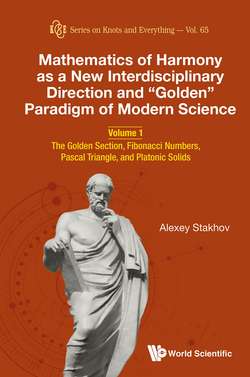Читать книгу Mathematics of Harmony as a New Interdisciplinary Direction and “Golden” Paradigm of Modern Science - Alexey Stakhov - Страница 22
1.1.4. The musical harmony of Pythagoras and the music of the spheres
ОглавлениеPythagoreans made wonderful discoveries in music. Pythagoras found that the most pleasant to ear consonances are obtained only when the lengths of the strings, that produce these consonances, have ratios as the first natural numbers 1, 2, 3, 4, 5, 6, that is, 1:1, 1:2 (unison and octave), 2:3, 3:4 (quint and quart), 4:5, 5:6 (thirds), etc. The discovery he made (the law of consonances) shocked Pythagoras. It was this discovery that first pointed out the existence of numerical patterns in Nature, and it was this that served as a starting point in the development of Pythagorean philosophy and in the formation of their basic thesis: “Everything is a Number.” Therefore, the day when Pythagoras discovered the law of consonances, was declared by the German physicist A. Sommerfeld the birthday of theoretical physics.
The discovery of mathematical regularities in musical consonances was the first “experimental” confirmation of the Pythagorean doctrine of Number. From this moment, the music and the related doctrine of Harmony began to occupy a central place in the Pythagorean system of knowledge. The idea of musical relations soon acquired the “cosmic scales” among the Pythagoreans and grew into the idea of Universal Harmony.
The Pythagoreans began to assert that the entire Universe is organized on the basis of simple numerical relationships and that the moving planets demonstrate “the music of the heavenly spheres” and ordinary music is merely a reflection of Universal Harmony prevailing everywhere. Thus, music and astronomy had been reduced by the Pythagoreans to the analysis of numerical relations, that is, to arithmetics and geometry. All four MATEMs (arithmetics, geometry, harmonics and spherics) began to be considered mathematical and called by one word — “mathematics.”
